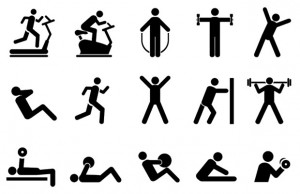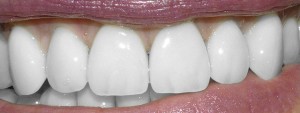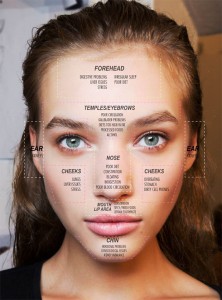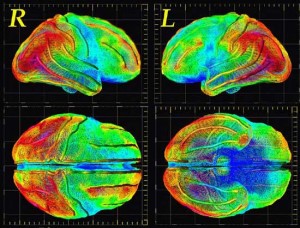Have you ever just looked up in the dark grey skies and watch as the sky lights up with a one-billion-volt electric shock and wonder, how is this possible? What is lighting exactly, and how does it form? According to the National Weather Service, your odds of being struck in your lifetime, based upon the average age of 80, is 1 in 13,000. That being said, are your chances of getting struck by lightening more if you are of a specific gender? My research on this topic are four-fold and through this particular blog post I hope achieve in answering all of the said questions. Personally, my hypothesis is the same as the null hypothesis, that there is no direct correlation to which gender is more susceptible to a lighting strike.

What is lightening?
Now that we know how lightening forms, let us take a look at what lightening is exactly. Is it really God smiting us humans on Earth? Science seems to disprove this theory. Lightening, according to National Geographic, is caused by an imbalance of charged particles within the cloud and has the ability to reach temperatures five times that of the sun’s. It also has the potential to strike Earth and cause many natural phenomena such as; snowstorms, forest fires, and even volcano eruptions! Who would have thought!? Luckily for us, the most common type of lightening doesn’t even hit the Earth. It usually transfers from one cloud to another. However, National Geographic, says that Earth is struck by lightening at least 100 times a day, making it a very common and naturally occurring event.
How is lighting possible?
Before we get into how many individuals get struck by lightening, let us take a look at how it forms. Lightening is much like getting shocked by your door handle when you reach to grab it. It all has to do with the build up of positive and negatively charged atoms. However, instead of building the static up through your feet and through your body, is builds up through the bottom of the cloud to the top. For there to be lighting there must be a thunderstorm. A thunderstorm is the vertical movement of water vapor from the surface to the air. At a certain height above the ground, a cloud will form when the temperature cools to the dew-point temperature. What exactly is the dew-point temperature? It is the temperature at which the air becomes saturated and water vapor condenses back to it’s liquid state. According to planet-science.com, as the cloud builds, the increase in height means a decrease in temperature. This makes the cloud at the top have frozen ice crystals, and the bottom to have rain drops (assuming the base of the cloud is above freezing levels). Due to the upward motion of air and water vapor and the natural down drafts of the thunderstorm, it causes the liquid water and ice crystals to bump into one another creating static electricity. This can be equated to the same as sliding your feet along the rug. Then after all of electricity has been built up within the cloud, the heavier negatively charged particles sink to the bottom of the cloud. While the negatively charged particles sink, the positively charged particles rise to the top because they are lighter, respectively. Then after enough static electricity has been built up, a huge shock – lighting – is created. This is ultimately like touching the door handle after you have rubbed your feet along the carpet.

How many people are struck by lightening?
To my surprise, a large amount of people are struck by lightening each year. Somewhere around 2,000 people are killed worldwide every year. Of the 2,000 people worldwide, 31 are struck and killed in the United States according to the National Weather Service’s 2006-2015 study. May not seem like much, but when they break it down to the odds of it happening to someone you know, it seems more likely. Based on their calculations, those odds are 1/1,300 people.
Just because you are struck by lightening doesn’t mean you will die. Even more people survive lightening strikes then actually die. However, their symptoms may be severe and forever lasting. Some side effects are; memory loss, dizziness, and memory loss. Of course there a number of other possible life threating side effects. With all the above said, are men or women more likely to be the victim of a lightening strike?
Who is at a higher risk for getting struck?
Surprisingly, it seems men are more likely to be struck by lightening than women! According to popsci.com, 648 people were killed by lightening between the years 1995-2008. Of those 648, 82% of them were men! Crazy, right? Well not really. The answer to this is quite simple, and actually makes a lot of sense. It was thought the cause of this was due to extra iron in the male cranium, or the conductive properties of the male hormone, testosterone. Unfortunately, this wasn’t necessarily the case at all. According to the article on popsci.com, and a study done by Peter Todd, a behavioral psychologist from Indiana University, it might just have to do with that fact that men are less willing to stop what they are doing for lightening. This being a possible third variable, Todd seems to think that the difference has to do with the natural “risk-vs- reward” process that has been genetically encoded within our biological being for thousands of years. Todd further explains that us women are naturally more inclined to stay back and care for their offspring, or themselves. Where as for men, they seem to have this natural attractions for one upping another male to be the alpha, or to potentially show off their courage to attract a female. This being said, this urge to impress comes with the younger male than their older and wiser male counterparts.

To conclude…
It seems my hypothesis may have been off, but not by much. I was simply researching to see if men or women have something within them that causes one or the other to be more susceptible to a strike (I.e. extra iron in the body, hormones, or bone structure). I was able to conclude that men aren’t necessarily more susceptible, but are more likely to be struck by lightening than a woman, not because of chemical makeup, but because they are less understanding of the consequences that they are facing. In conclusion, men seem to be more likely to be struck by lightening, but are by no means more susceptible than their female counterparts.
Sources-
http://www.lightningsafety.noaa.gov/odds.shtml
http://environment.nationalgeographic.com/environment/natural-disasters/lightning-profile/
http://www.planet-science.com/categories/over-11s/natural-world/2012/06/what-causes-lightning.aspx
http://www.popsci.com/scitech/article/2009-09/are-men-or-women-more-likely-be-hit-lightning
Photo one: Link
Photo two: Link
Photo three: Link



 that we had paper towels in our bathrooms.
that we had paper towels in our bathrooms. Of course, there are many different aspects to this controversy that differ from the hygienic standpoint of it all. Air dryers are favored when it comes to cost and friendliness to the environment. According to the
Of course, there are many different aspects to this controversy that differ from the hygienic standpoint of it all. Air dryers are favored when it comes to cost and friendliness to the environment. According to the 









 In addition to the gross factor, there are many other reasons why picking your nose is something you should quit now. It is actually quite a major health concern which, when you think about it, makes a lot of sense. First, by picking your nose, you can actually cause a nose bleed to start. There are many arteries that are located in the nose. When you scratch those arteries it can cause intense bleeding and start a nose bleed. This is a very common thing that happens to younger kids.
In addition to the gross factor, there are many other reasons why picking your nose is something you should quit now. It is actually quite a major health concern which, when you think about it, makes a lot of sense. First, by picking your nose, you can actually cause a nose bleed to start. There are many arteries that are located in the nose. When you scratch those arteries it can cause intense bleeding and start a nose bleed. This is a very common thing that happens to younger kids.































